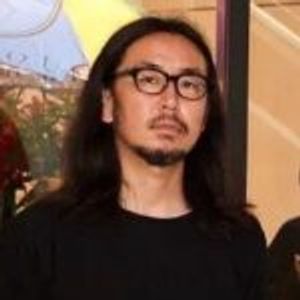After meeting Bob Marley in 1973, Dennis Morris accompanied him on a tour of the United Kingdom and paved the way for his career as a photographer. In 1977, he served as an official photographer for Sex Pistols (hereinafter called Pistols) for the first time. Since then, his career has been marked by the work of such eminent artists as Marianne Faithfull, Patti Smith, The Stone Roses, Oasis, Radiohead, and many others. In June, he published SUPER PERRY- The Iconic Images of Lee Scratch Perry, a collection of photographs taken over the past 40 years of Lee “Scratch” Perry, who passed away last year. Dennis visited Japan for the exhibition at Bookmark in Harajuku, and we asked him about his career as a photographer and the background of this book, for which he has continued to follow Lee Perry.
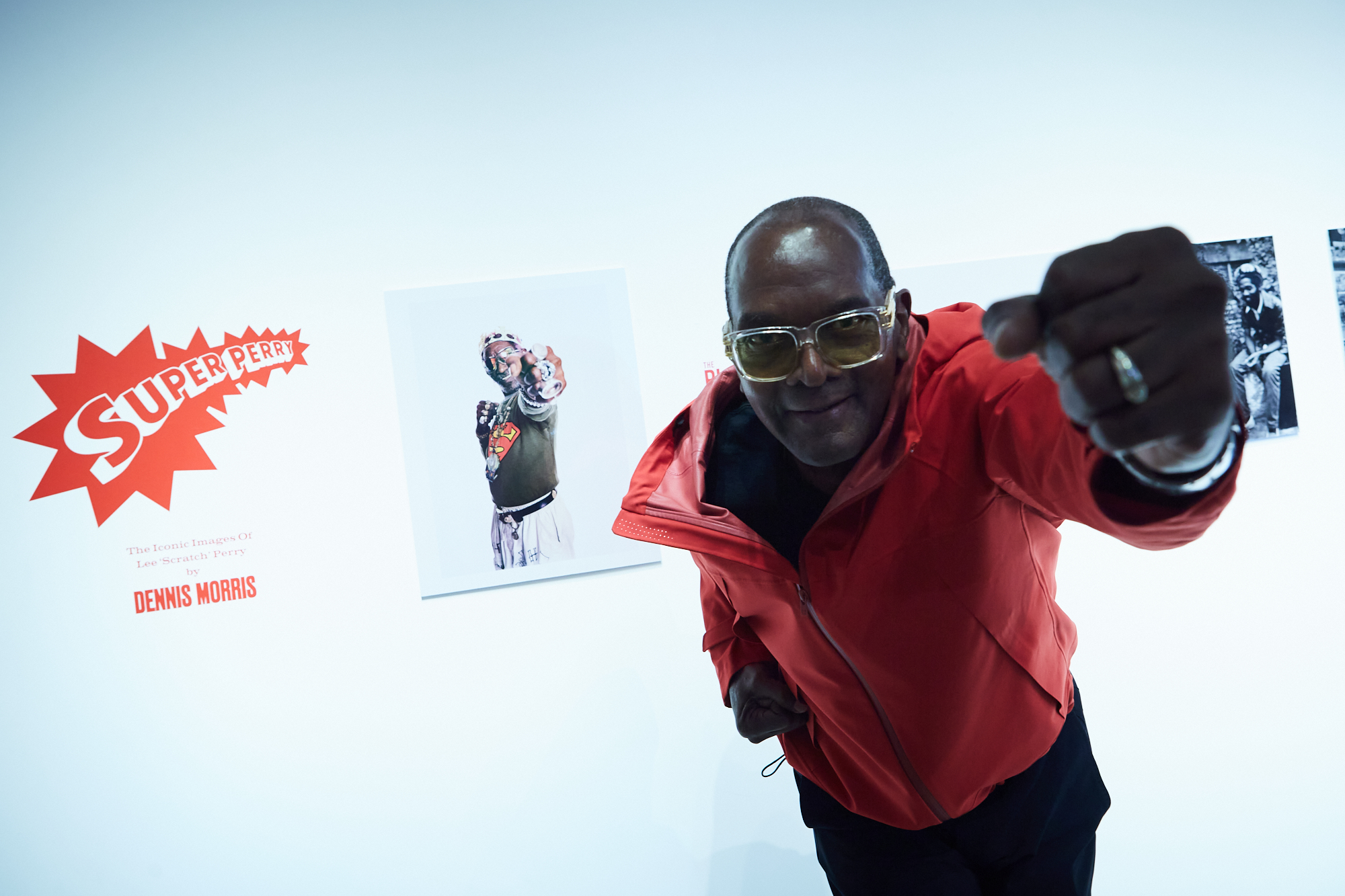
“Lee Perry was like a combination of all the artists I’ve photographed”
–What was the impetus for the publication of SUPER PERRY- The Iconic Images of Lee Scratch Perry?
Dennis Morris (Morris): First and foremost, it was important to create Lee Perry’s work. I had been listening to his music ever since I was a young man, just like I had been involved in photoshoots of Bob Marley. I actually got to meet him in 1976, and it was like we understood each other instantly, and we became friends right away. If you see the pictures taken back then, you can feel our friendship from that time.
–How long have you been following Lee Perry?
Morris: From 1976 to 2016.
–The subtitle of the book is “The Iconic Images of Lee Scratch Perry.” What do you think is Lee Perry’s iconic image?
Morris: Hmmm………. I think you can tell a lot about him through photos I took in the studios, which should directly relate to his image. Everything from instruments to equipment is all interesting to look at now, and the recording process was also fun. I remember how interesting it was to see what was going on at the whim of him.
–Is there any impressive moment that you still remember?
Morris: There are too many (laughs). When I was shooting in a studio, a lot of unexpected things happened. You can tell from the atmosphere of the studio in the pictures, right? He was moving around, jumping, yelling like “ho-ho-ho,” and randomly pushing buttons on equipment. I think of him as the (Salvador) Dali of music scene.
— As a photographer who has shot many artists, what do you find attractive about Lee Perry as a subject?
Morris: He was like a combination of all the artists I’ve photographed. From reggae to punk to new wave, he had all the elements, and that’s important. As far as music is concerned, I don’t think there were any genre barriers.
“I am always conscious of journalism, and all my photographs are reportage. “
–You began your career as a photographer with Bob Marley and then the Pistols. Since then, you have been exposed to pretty much all genres including reggae, dub, punk, new wave, and hip-hop. What do you think is the power of music for you?
Morris: The answer is simple. It is the power to bring everyone together across the boundaries. I think everyone knows that music can affect the heart, and it doesn’t matter what skin color you have or who you are, you can all come together as one. There is also “love,” “fun,” and “joy. When you are depressed, listening to a sad song will make you feel as if you have been salvaged. In a sense, music is like the “heartbeat” of human beings.
–How has music influenced you as a photographer?
Morris: All kinds of influences. I traveled to different places for each shoot, and I think I discovered something new each time. There are a lot of things that you get from going to see a show, and there are things that you can feel from the photos I shot. Music means a lot to me.
–I read in an interview that you originally wanted to be a photojournalist. Do you ever think about journalism when you take portraits?
Morris: I am always conscious of journalism, and all my photographs are reportage. I was once inspired by a battlefield photographer and wanted to photograph Vietnam War, but I was too young at the time.
Tim Page, a famous battlefield photographer, went to Vietnam after Jim Morrison of The Doors died. I didn’t get to go to the war, but I did get to photograph Bob Marley and the Pistols. In a way, I think this was my “battle.” Especially with the Pistols, the shooting was always chaos (laughs).
–Are there any episodes that stand out in your memory from your close association with the Pistols, such as the relationship between John Lydon and Sid Vicious?
Morris: Sid was depressed and extremely drunk during the Pistols’ UK tour. His hotel room in London was right next to mine, and the whole time I could hear something hitting or crushing against the wall (laughs). Then I went to his room, and there was a TV set smashed to pieces, and it was a complete mess (laughs). Of course, I took pictures of that. It was a time when I had heard several stories of people throwing TVs out of hotel windows.
–I have seen the scene in the Rolling Stones’ documentary film where Keith Richards throws the TV out of the hotel window.
Morris: Yes, yes (laughs)
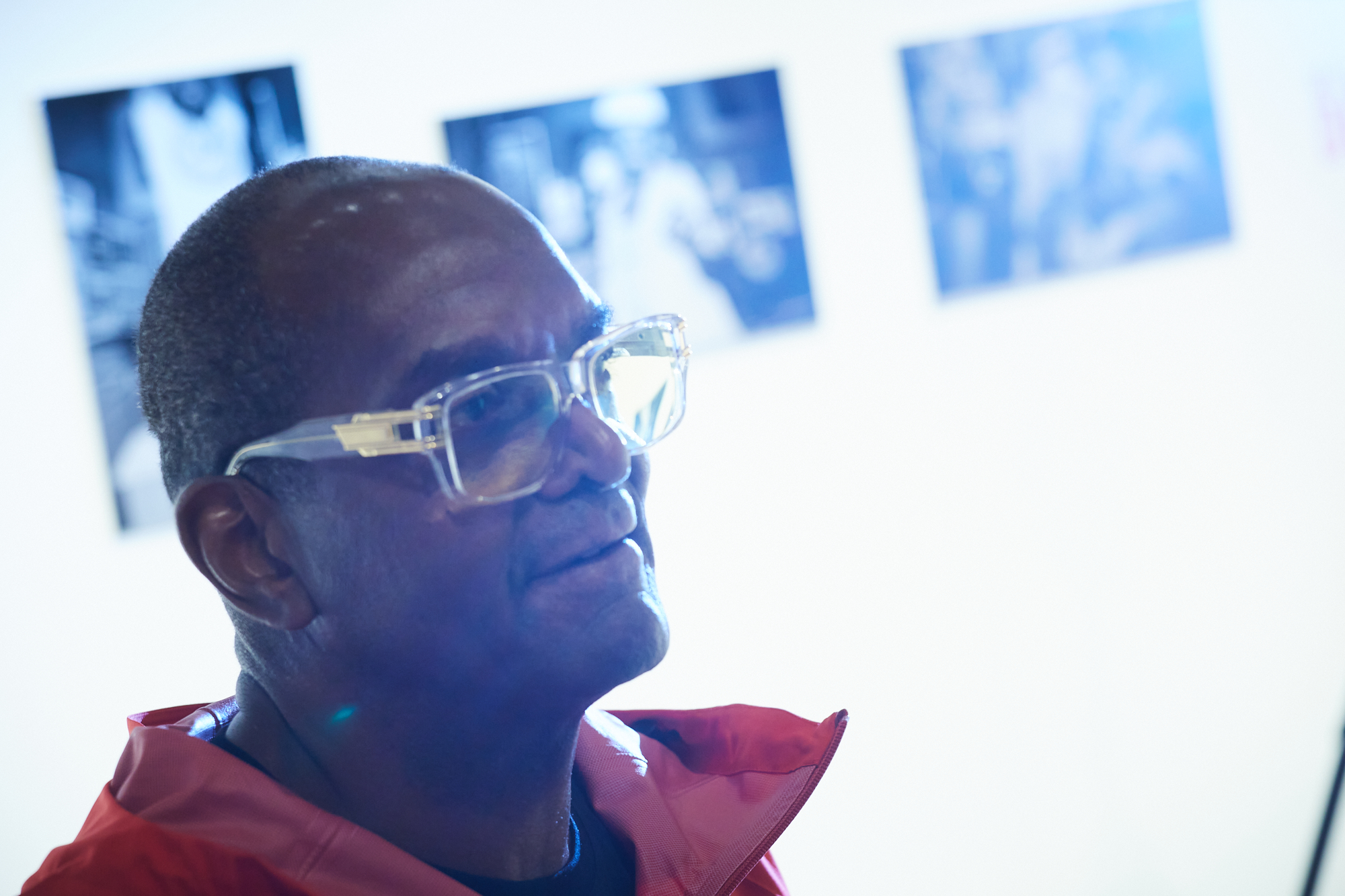
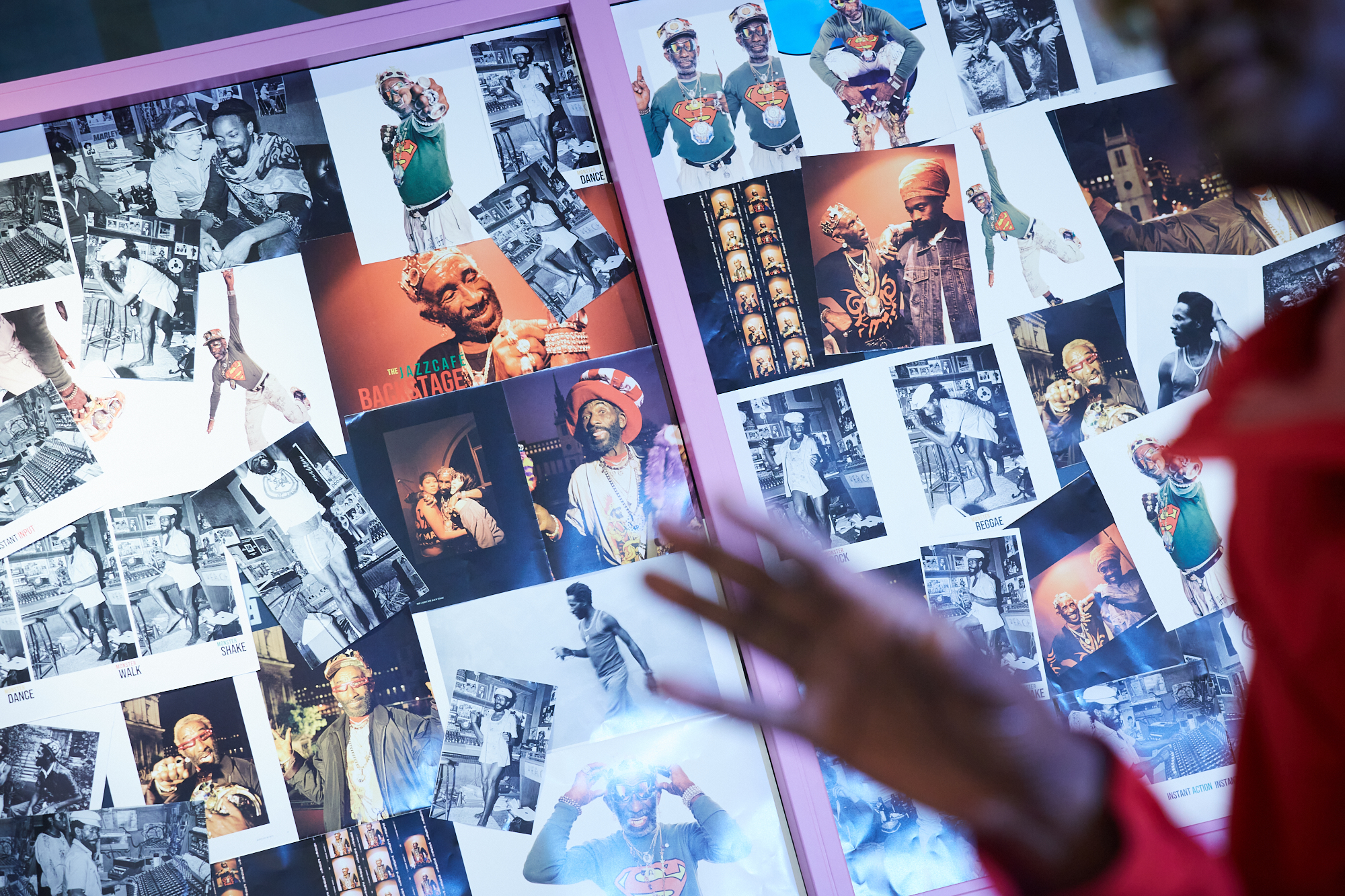
” I am always conscious of ‘communicating’ with everyone I photograph. “
–I feel that many of your portraits have a relaxed atmosphere. What do you keep in mind when shooting icons?
Morris: I am always conscious of “communicating” with everyone I photograph. To do that, I have to be close, and I think that is an innate ability of mine. It is not something you can acquire through repeated rehearsals. It is very important for the subject to be relaxed during the shoot, and I think this exhibition will also allow people to see my work and get to know each other.
And everyone always wears a face mask. If they can connect with me, they can take off that mask. That’s when you can see their true face. Like with the Bob Marley photos, because he trusted me, I was able to capture his expression that he normally wouldn’t show.
–How did you develop the ability to “communicate”?
Morris: That would be nothing but a gift. Even though I have traveled all over the world and do not speak every language, I am able to communicate because language is only a communication tool. I don’t think words are necessary if we can communicate with each other from the heart.
If I could say one thing about it, it might be similar to the feeling of communicating with a baby. Babies cannot speak, but if they feel uncomfortable, they cry, and if they are comfortable, they laugh. It may be just like that.
— The same is true of music and photography in terms of communication that does not require words, isn’t it?
Morris: It really is. When you have an exhibition overseas, it often takes time for people to understand no matter how much I talk to them, but if they see a performance, they can immediately understand what I am thinking.
–There should be occasions where you shoot artists who tend to keep a certain distance from you, but how do you shorten that distance and subjects and bring out the natural expression of them?
Morris: Of course, there are techniques. Sometimes I act look like I’m playing with the camera when I shoot, and sometimes I use that process to bring out new movements and expressions. For example, when playing with children, it is important to be in their perspective. That way, they will find it interesting. I think the same can be said for anyone.
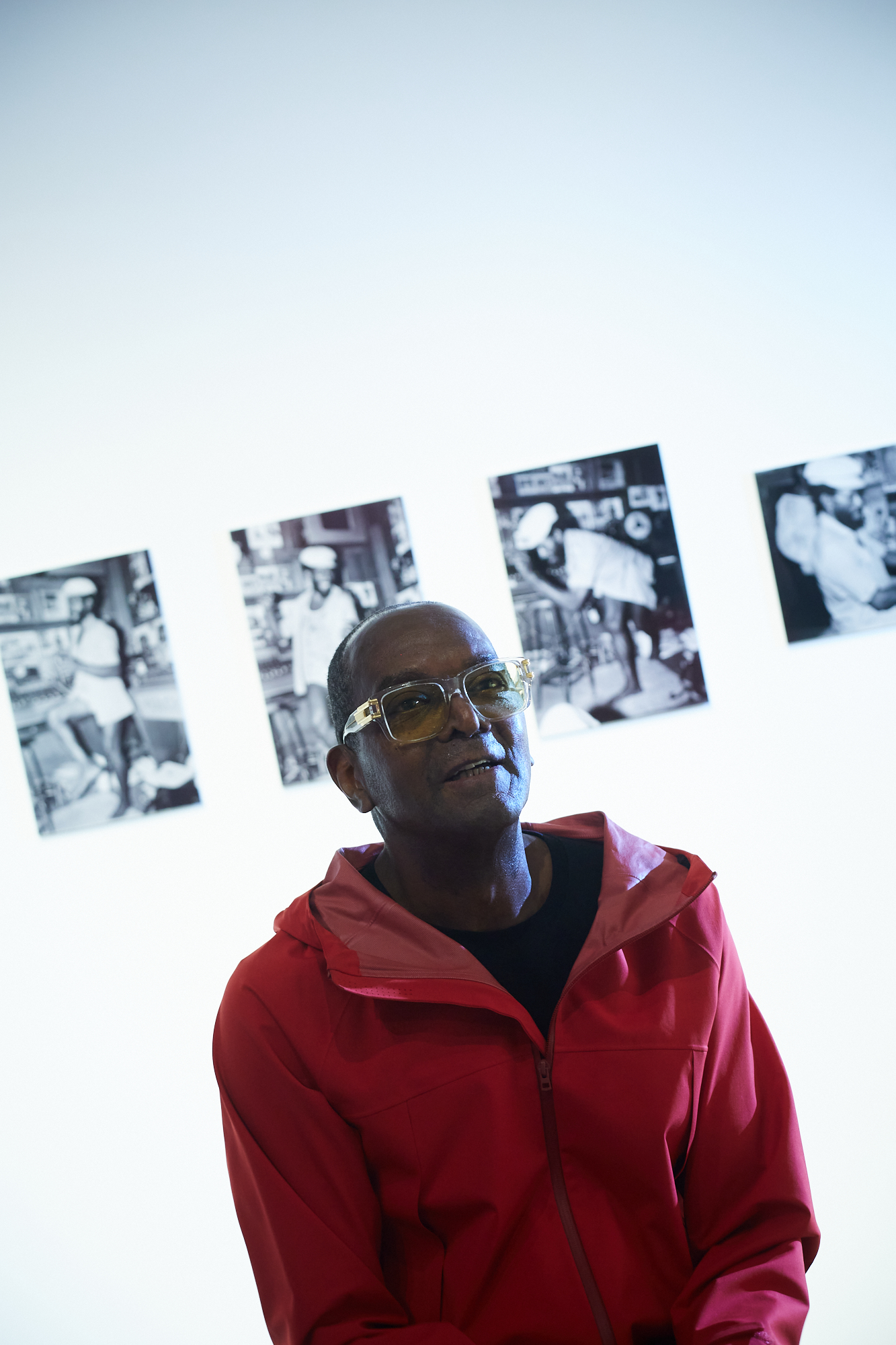
— Is there any musician who has been on your radar recently?
Morris: I think Jack White is interesting. He is very innovative and creative. I haven’t worked with him yet, but I would love to photograph him.
–Lastly, this year marks 11 years since the Tohoku earthquake and tsunami. I heard that you were in Japan at the time. Now it is also a crisis in a different sense due to the COVID-19. What do you think about the city of Tokyo and the people you saw in this situation again?
Morris: I was amazed at the sense of unity that the Japanese people have in creating one community. In other countries, I think it would have been even more chaotic. In other countries, there is a strong “Me” mentality, but the Japanese have a strong “Us” mentality. I was with my family, and I think our family’s love for each other was strengthened by that sense of unity of Japanese people. I was very much influenced by that.
Also, I would like to do more exhibitions in Japan. What I want to do is a different kind of photography exhibition. I also take photographs that are not related to music, so I would be happy to exhibit socially relevant documentaries as well.
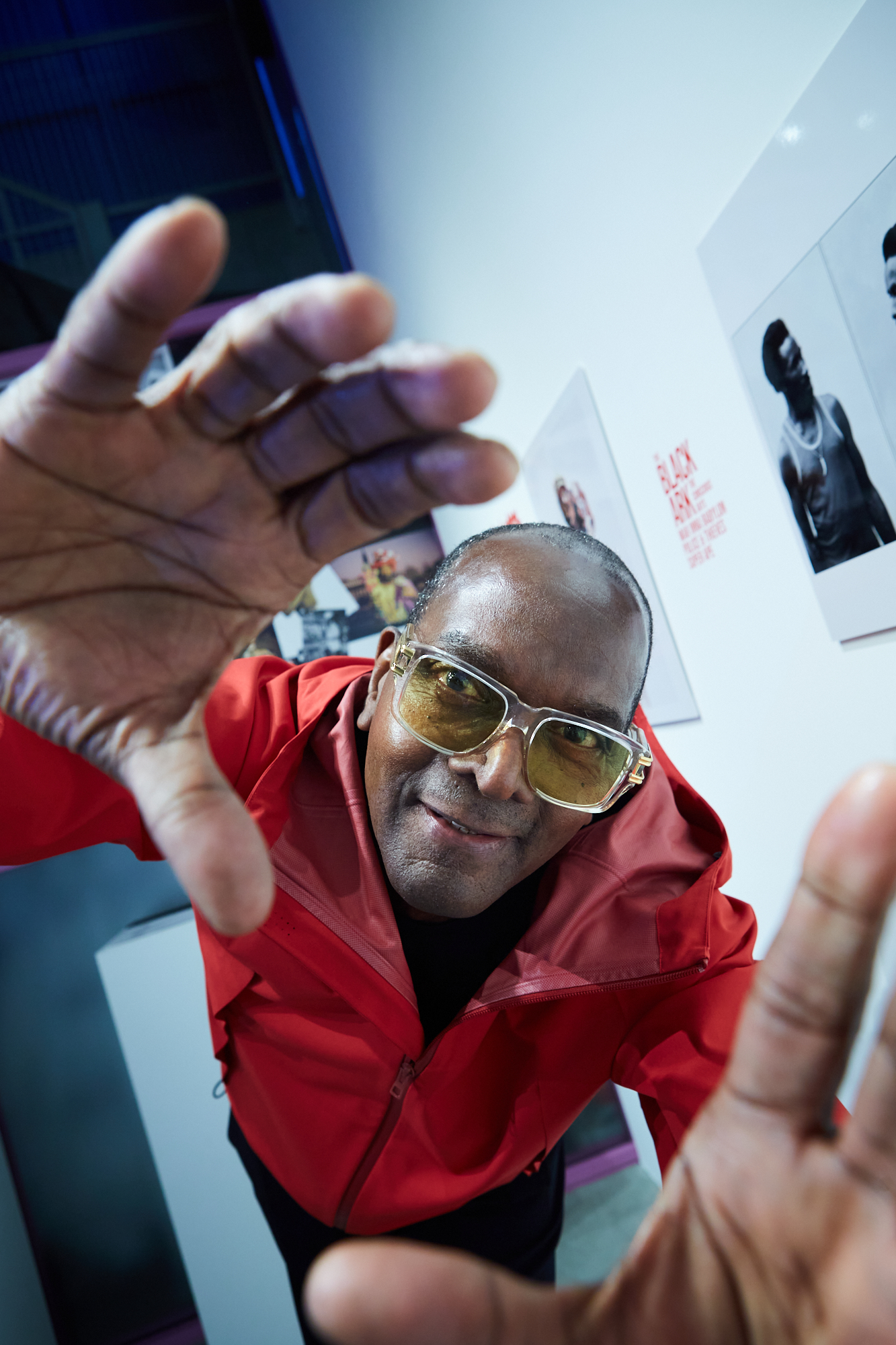
Dennis Morris
Born in 1960, Morris met and toured with Bob Marley in 1973, and began photographing the Sex Pistols in 1977 as their official photographer. Since then, he has done artwork for P.I.L. and helped the launch of the reggae label of Virgin Records. His photography books include Bob Marley and A Rebel Life; The Bollocks, a photobook about the Pistols. In June, he published SUPER PERRY- The Iconic Images of Lee Scratch Perry, a collection of photographs of Lee Scratch Perry up to the last years of his life.

Photography Kazuo Yoshida
Translation Shinichiro Sato(TOKION)

